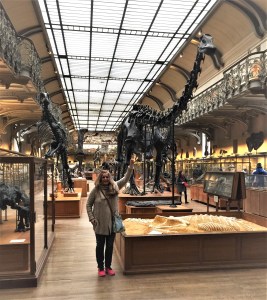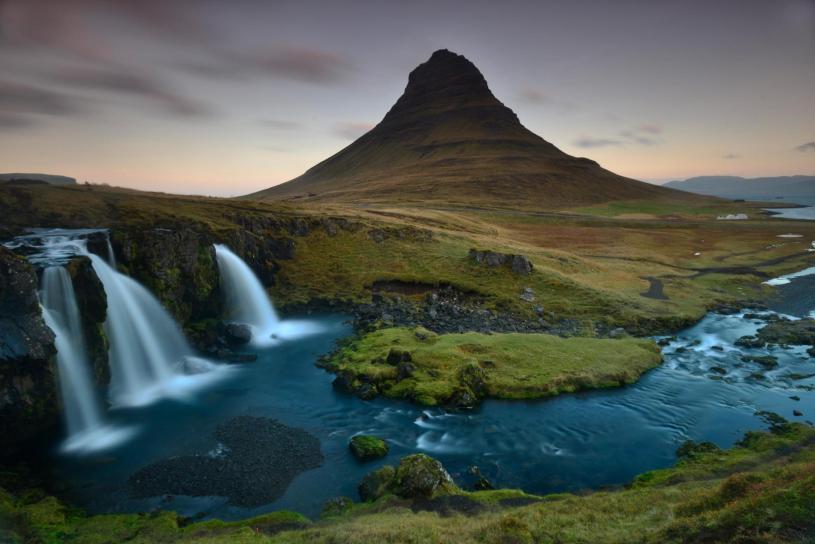In my recent post “Journey to the Center of the Earth”, I wrote an overview of Jules Verne’s Science Fiction novel with my pre-reading predictions of this incredible journey. Having now finished this novel, which greatly surpassed my expectations, I will narrow my focus on the geological/paleontological components with the help of Dr. Allen A. Debus’ article “Re-framing the Science of Jules Verne in Journey to the Center of the Earth” (2006).
As I stated in my last post, this Journey should be viewed as a ‘life-through-time’; where the past comes alive, layer by layer!
One reason I love to read Verne is that he presents his adventurous quests with the credibility of scientific study. In Journey, Verne repeatedly references two scientists to create the illusion that passage into the Earth’s deep interior is possible. One scientist never lived; the other was very real. The sixteenth-century Icelandic alchemist and scholar Arne Saknussemm, who leaves a Runic message leading Professor Lidenbock on his voyage, is entirely fictitious.
Humphry Davy (I778-1829) was, however, an eminent early nineteenth-century British chemist who also dabbled in geological and paleontological science. Davy’s research in chemistry influenced another Romantic, Mary Shelley, who began reading his book Elements of Chemistry (1812) on October 28, 1816, while she was writing Frankenstein (“Reframing”, 412).
Is it possible to descend into an extinct, six-century-old volcanic crater in Iceland, the Snaefellsjökull, leading into the Earth’s deep interior? Can one travel from the oldest “Silurian” stages through the recent paleontological history, the era of Quaternary man? Stay tuned.
As our travelers descend into the Earth’s crust, Professor Lidenbrock reassures his team that they will not encounter elevated temperatures even as they near the base of the Earth’s crust. How is this possible, even in one’s imagination? Verne’s protagonist bases this theory on Humphry Davy’s geochemistry, in particular on his chemical oxidation theory of volcanic eruption. Davy, who had conducted many laboratory experiments on the electrochemistry and purification of metallic elements, had observed the reaction of water with alkaline metals such as sodium and potassium.
Davy’s volcanic theory is compatible with the separate notion of a steadily cooling Earth. Verne’s most elegant presentation of Davy’s ideas is found in chapter six, where he describes chemical reaction on the surface of the globe, followed by crustal cracking and subsequent recession of those eruptions into the Earth, where their effects on the surface eventually dissipate (413). Verne also consulted Louis Figuier’s La Terre avant le deluge [Earth Before the Deluge, 1863]. Figuier also outlines the nebular hypothesis for explaining how the Earth formed, offering insights into the workings of volcanoes.
The second scientific theory in which Verne based this Journey is in the “Sedimentary Soil” of the second Period, where antediluvian organisms from prehistoric times survive in subterranean caverns. Again, Verne consults Figuier and Davey’s terrestrial models. Plants and living organisms UNDER the sedimentary rock of the Earth’s crust?? So cool.
As I read Journey, I tried to imagine the geological time scale of the earth. Would there be evidence of each era as you descend towards the center of the Earth? As if you were cutting into a multi-layered cake? The Precambrian, Paleozoic, Mesozoic, Cenozoic—are these stacked upon one another in this order? If you descend into the Earth from Iceland, what layers will you cut through? If you believe in the theory of Pangaea, all land mass was once on a super-continent and began to shift 175 million years ago. This would have been during the Jurassic era. The distribution of fossils across the continents is one line of evidence pointing to the existence of Pangaea. Verne does not go into much detail about this in Journey, but it has always fascinated me.
As I have been retelling Journey to my grandson, George, we have had a great time imagining seeing fossils of our favorite dinosaurs on the descent to the center of the Earth: the first layer Cretaceous Era (earliest 145-55 million years ago) with his favorite dinosaur, Tyrannosaurus Rex, and Triceratops; the next oldest Jurassic (201-145 million years ago) with my favorite the Diplodocus, the Stegosaurus followed by Triassic (252-201 million years ago). I also love ammonites, the original homes of my cephalopods such as the octopus and squid. I have several ammonite fossils that were found in the Dallas, Texas area where I live.


My favorite part of this Journey is discovery of the titanic marine saurian, Ichthyosaurus and Plesiosaurus. These are not fossils, they are living, breathing leviathan. Axel confirms that “two monsters are disturbing the surface of the seas. I have before me two reptiles from the Primitive oceans” (159). The heroes then witness the “indescribable fury” of these creatures as they fight to the death. The explorers have now passed through the Earth’s Secondary Era’s Lias and Lower Oolite stages. Dinosaurs have become extinct on the Earth’s surface, but not UNDER the Earth’s surface. Of course, this could still be a reality today in the depths of the oceans (have you read Rachel Carson’s The Sea Around Us? A must read!).
Following the combat of these two leviathans, Professor Lidenbrock comes upon a huge graveyard of fossilized bones from “the whole history of animal life” (Journey, 178). How did these bones get here? Axel supposes that they were deposited through fissures in the Earth’s crust; possibly after the time when the Earth was completely covered by a flood and the waters receded. Part of these bones represent the Tertiary elephants from the Secondary Era through the Pliocene epoch, when Mastodon thrived. Verne discusses these recognizable genera in relative geological order from the oldest to the youngest. This, of course, leads us into the age of mammals and of prehistoric Man, “Proteus of these underground realms… So the dream world where I had seen the rebirth of this complete world from prehistoric times, combining the Tertiary and Quaternary Periods, had finally become reality! (186)”
It is evident that in Verne’s subterranean paleontological museum, the past repeatedly comes alive both figuratively and literally. The Paleoanthropological! In a sense, during their journey, Axel, Hans and Lidenbrock become “cavemen.” At one point, the explorers are likened to troglodytes; Axel frets over their possible death and transformation into fossils (Debus, 414). Hans, their Icelandic tour guide, is seen as an “antediluvian man”; Professor Lidenbrock as a Phineas T. Barnum ‘Exhibit’. Verne’s motives were strictly non-Darwinain.
Debus reveals that previous to Verne’s writing of Journey, M Boucher, a paleontologist, had unearthed a fossilized human jaw-bone near Somme, France. Next to it were stone axes and worked flints. Many scholars from the Institut Français believed this human lived before the “flood” period. Verne’s view conflicted with his research from the French naturalist and zoologist Georges Cuvier, the “founding father of paleontology”, who contended that the human race could not have existed at the same time as the animals of the Quaternary Era. [see more on this in Debus’ article]
Finally, Debus reminds us that “volcanoes, fossils, and prehistoric leviathans anachronistically juxtaposed with modern adventurers would seem an odd admixture of literary props to be confronted with in a novel appearing in the 1860’s. Yet in Verne’s Journey to the Center of the Earth, scientific pedagogy provides the necessary perspective and justification through the thrill of a unique ‘life-through-time’ experience that captured his readers’ imaginations” (417). Verne’s Journey to the Center of the Earth transported me into a new way to think about geology.
Works Cited
Re-Framing the Science in Jules Verne’s “Journey to the Center of the Earth” Author(s): Allen A. Debus Source: Science Fiction Studies , Nov., 2006, Vol. 33, No. 3 (Nov., 2006), pp. 405-420 Published by: SF-TH Inc Stable URL: https://www.jstor.org/stable/4241461
Verne, Jules. Voyage Au Centre De La Terre. 2001. Paris: Le Livre de Poche.

Interesting perspective. Unfortunately, I missed the boat by failing to read Jules Verne to my kids. Maybe I can share Verne’s work with a grandchild some day. So nice that you and your grandson can take these journeys together.
Hi Carol! My daughters were never interested in Science Fiction so it is wonderful to have a grandson to share Verne with! Now if I could get on board with Godzilla, he would be so happy.
Funny! 🙂
Verne had an incredible imagination inspired by the science of his day. I love the fact that imagination can create a version of life that inspires and informs us, not so much about science but for our quest for adventure…and the meaning of life. The deeper we dig, we discover the stories of our past that inform our present realities.
Yes, David, and how can we focus on the past and not allow it to color and cloud our present realities? This is my current reality!! Thank you for stopping by.